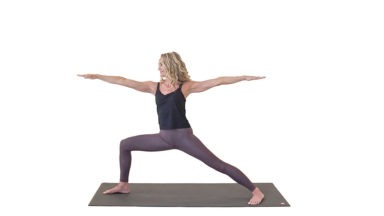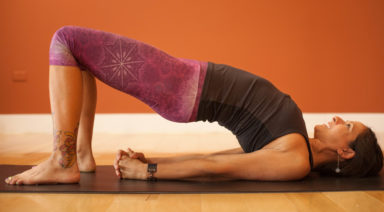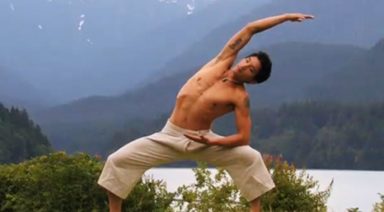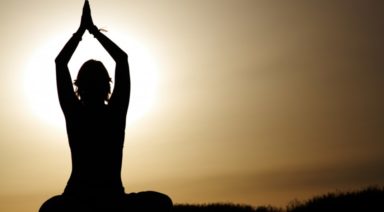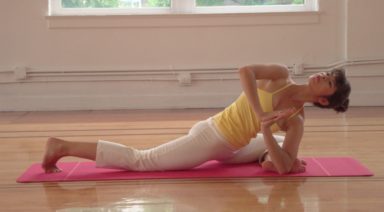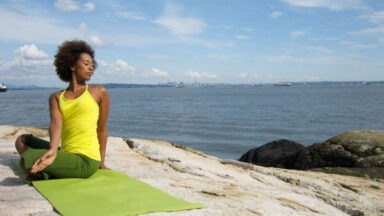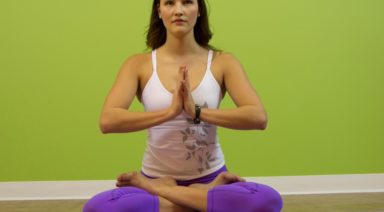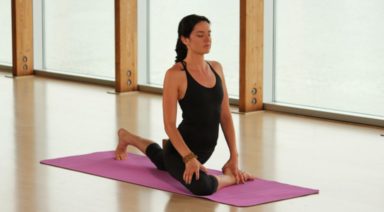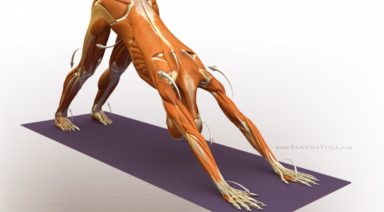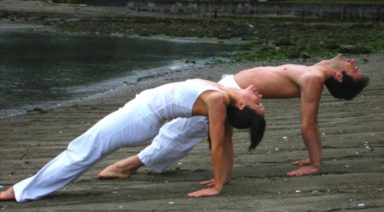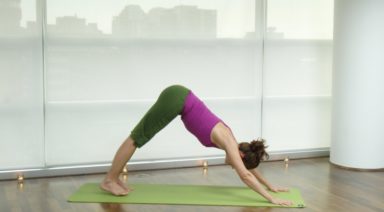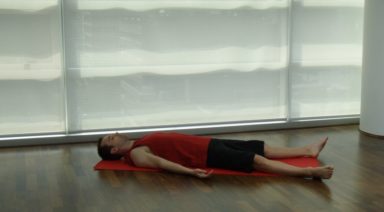Viparita Virabhadrasana: Reverse Warrior Pose

ADJUSTMENTS | BENEFITS | SEQUENCING | SANSKRIT | STEPS
In viparita virabhadrasana (VIP-uh-REE-tuh veer-uh-buh-DRAHS-uh-nuh), experience a member of the “warrior” family with an incredible opening in the side of the torso as well as the stretching the legs. By giving the side of your heart an opportunity to shine (as a side bend rather than a back bend), this posture offers all sorts of positive vibes, including a boost of self-esteem and perseverance.
Philosophy + Origin
The general definition of a warrior is someone who “engages in warfare,” which conjures up images of battlefields, weapons, and violence. The power of reverse warrior is to “turn around” this imagery to think about warriorship in different contexts. The idea of a peaceful warrior, or even a light warrior, is used in yoga to remind students that showing up with love and intention in day-to-day life is just as important, if not more so. When practicing reverse warrior, ask yourself to consider definitions or beliefs in your life from another perspective. There are two sides to each coin, and the better you know both sides, the better prepared you will be to live your life with steadiness, grace, and ease.
Adjustments/Modifications:
- If gazing up feels uncomfortable, practice the pose with your gaze toward the ground or use your raised arm to cradle the head.
- Rather than trying to reach back as far as possible in this pose, bring your attention to lifting and lengthening through the spine.
- Pay special attention to your lower back as you practice this pose. If you begin to feel a backbend more than a side bend, ease away from the shape until you can once again find length and space.
Step-By-Step
- Start in warrior II with your right foot forward and your left foot back. Bend your front knee directly over your ankle.
- Inhale your right hand to the sky.
- Keep the bend in your front knee.
- Lengthen the sides of your torso with every inhale, strengthen your legs with every exhale.
- If it’s comfortable for your neck, turn your gaze up to the fingertips of your right hand.
- Soften your shoulders down your back.
- Hold for 3-5 breaths, then release to warrior II. Repeat on the other side.
Preparatory Poses:
- Warrior II | Virabhadrasana II
- Extended side angle | Utthita parsvakonasana
- Revolved head to knee | Parivrtta janu sirsasana
Sequential Poses:
- Extended triangle pose | Utthita trikonasana
- Seated compass pose | Parivrtta surya yantrasana
- Monkey lunge | Anjaneyasana
Counter Poses:
- Extended side angle | Utthita parsvakonasana
- Wide-legged forward fold | Prosarita padotanasana
- Standing forward fold | Uttanasana
Sanskrit:
- Viparita = reversed, turned around
- Virabhadra = incarnation of Lord Shiva
- Asana = pose
Physical Benefits:
- Stretches groins, hips, and obliques.
- Releases tension in the muscles around the ribs to create a deeper, freer breath.
- Energizes the body.
Energetic Benefits:
- Improves self-esteem and perseverance.
- Opens the heart and throat chakras.
- Calms the mind.
Legal Disclaimer Before participating in any exercise program or using any fitness products or services that may be described and/or made accessible in or through the Gaia Website and/or the Services, you should consult with a physician or other healthcare provider. Read more about Gaia’s Terms Of Use.
Virabhadrasana II: Warrior II Pose
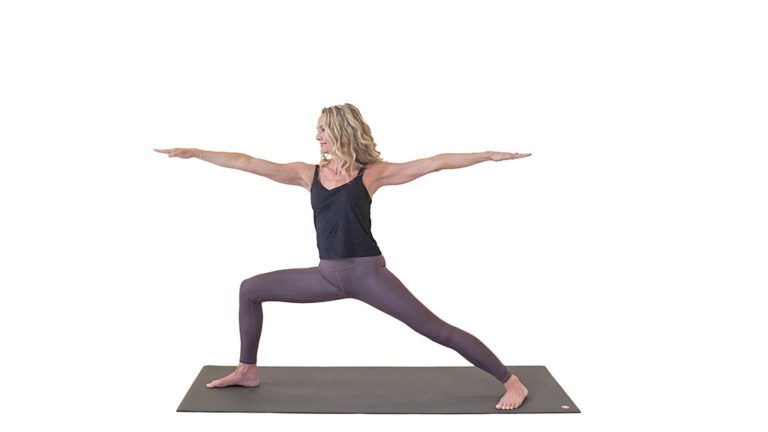
ADJUSTMENTS | BENEFITS | SEQUENCING | SANSKRIT | STEPS
Warrior II, or virabhadrasana (veer-ah-bah-DRAHS-anna) II, is a strengthening pose that improves physical and mental endurance. Its ability to stretch your upper legs and ankles while also expanding your chest and shoulders makes it an essential foundational pose for most asana-based (pose-based) yoga practices.
Philosophy + Origin
While warrior II is a strong pose, it also requires balance and steadiness. Although many origin stories for virabhadrasana II describe the shape of the pose as the stance Virabhadra took as he drew his sword to remove the head of his enemy, any student who has practiced the pose will learn that, while fierce, there’s also a gentleness within the physical lines. The yogic philosophy of sthira sukha, or balancing effort with ease, can be applied when practicing warrior II. How can you harness your warrior spirit while not losing sight of your gentle spirit and your commitment to ahimsa, non-violence?



